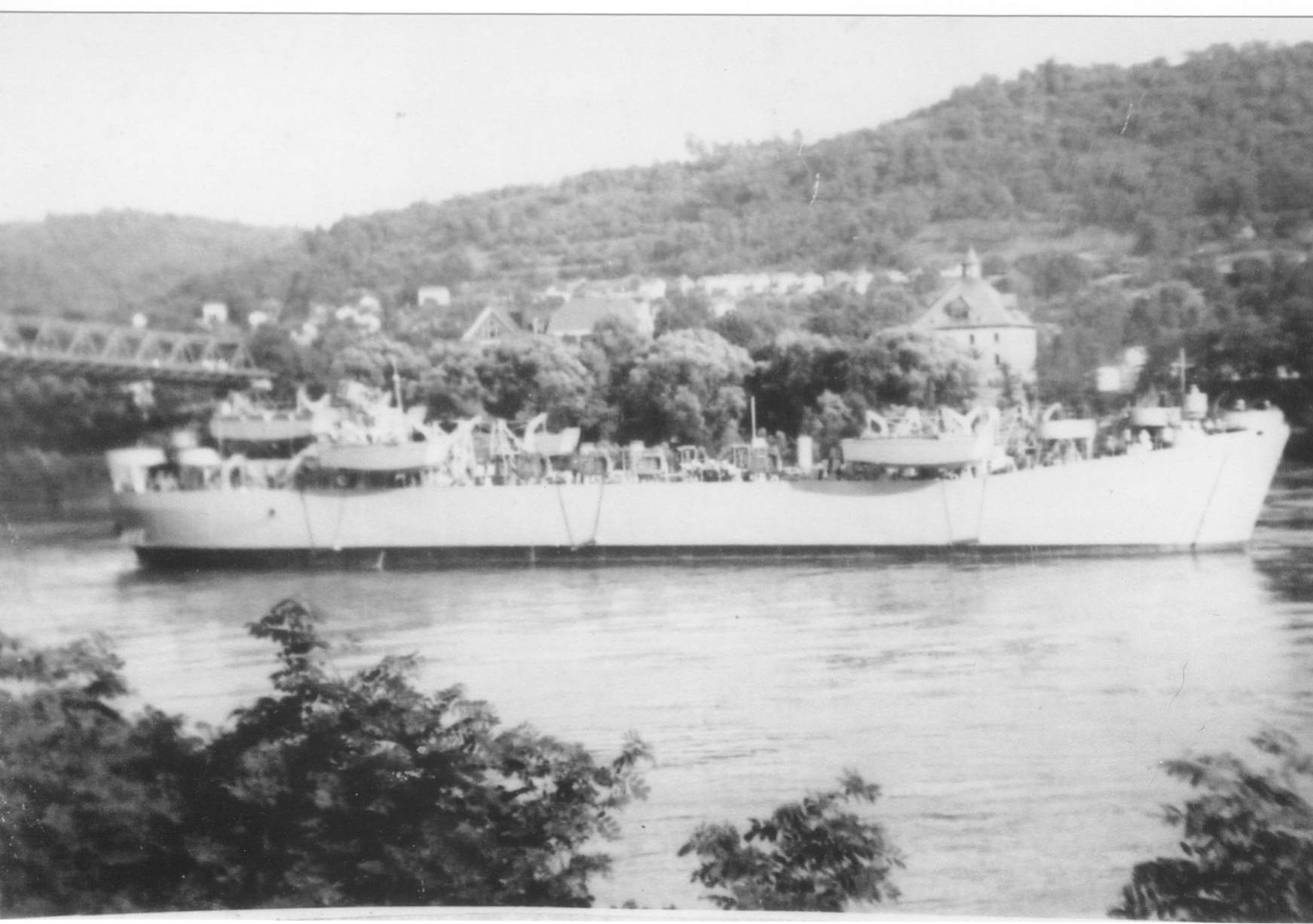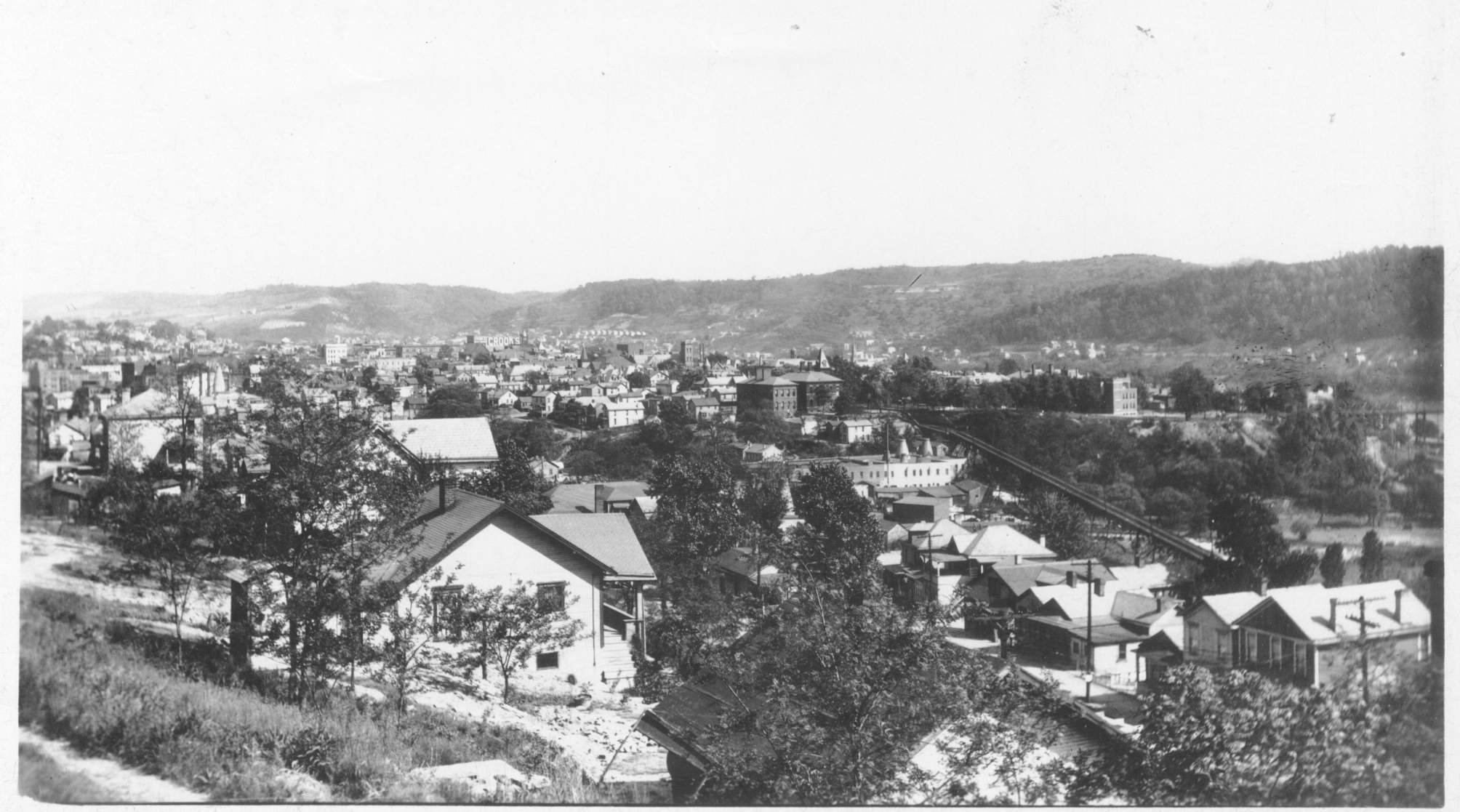| All pictures are from the archives of the East Liverpool Historical Society |
 |
| LST's used for landing troops were built in Pittsburg during WWII. This one was moving down the river, past Chester in the background, eventually destined to reach New Orleans area for final outfitting and then into the Gulf of Mexico for sea trials. One Liverpudlian woman, a resident of 2nd Street told of standing along the river on Sunday afternoons watching them pass down the river on their way to the Gulf of Mexico. |
From the Dictionary of American Naval Fighting Ships, Vol. VII (1981), pp. 569-731.TANK LANDING SHIPS (LST) http://www.hazegray.org/danfs/amphib/lst.htm
The need for LST's was urgent, and the program enjoyed a high priority throughout the war. Since most shipbuilding activities were located in coastal yards and were largely used for construction of large, deep-draft ships, new construction facilities were established along inland waterways. In some instances, heavyindustry plants such as steel fabrication yards were converted for LST construction. This posed the problem of getting the completed ships from the inland building yards to deep water. The chief obstacles w ere bridges. The Navy successfully undertook the modification of bridges and, through a "Ferry Command" of Navy crews, transported the newly constructed ships to coastal ports for fitting out. The success of these "cornfield" shipyards of the Middle West was a revelation to the long-established shipbuilders on the coasts. Their contribution to the LST building program was enormous. Of the 1,051 LST's built during World War II, 670 were constructed by five major inland builders.
By 1943, the construction time for an LST had been reduced to four months; and, by the end of the war, it had been cut to two months. Considerable effort was expended to hold the ship's design constant; but, by mid-1943, operating experience led to the incorporation of certain changes in the new ships. These modifications included: the replacing of the elevator by a ramp from the main deck to the tank deck, an increase in armament, and the addition of a distilling plant to make potable water. The ma in deck was strengthened to accommodate a fully-equipped landing craft, tank (LCT).
Almost all of the first 60 were built in Pittsburgh Pa. Others probably were as well but that information wasn't provided at this source.
 |
| The West End — taken sometime between 1907 and 1939. Landmarks are: 6th street school, hospital, Newell Bridge, Adamant Porcelain Co., the 6th street viaduct also known as the Tripartite Bridge to west 8th street |
This site is the property of the East Liverpool Historical Society.
Regular linking, i.e. providing the URL of the East Liverpool Historical Society web site for viewers to click on and be taken to the East Liverpool Historical Society entry portal or to any specific article on the website is legally permitted.
Hyperlinking, or as it is also called framing, without permission is not permitted.
Legally speaking framing is still in a murky area of the law though there have been court cases in which framing has been seen as violation of copyright law. Many cases that were taken to court ended up settling out-of-court with the one doing the framing agreeing to cease framing and to just use a regular link to the other site.
The East Liverpool Historical Society pays fees to keep their site online. A person framing the Society site is effectively presenting the entire East Liverpool Historical Society web site as his own site and doing it at no cost to himself, i.e. stealing the site.
The East Liverpool Historical Society reserves the right to charge such an individual a fee for the use of the Society’s material.